By Anna J. Clutterbuck-Cook, Reader Services
Tomorrow, the Massachusetts Historical Society — in collaboration with the Emerald Necklace Conservancy — is offering a walking tour of our neighborhood, the Fenway. In celebration of this unique neighborhood, I have selected a few postcards from our collection that illustrate the Fenway’s gardens, streets, and buildings as they once appeared. The next time you visit the Massachusetts Historical Society, the Museum of Fine Arts, Fenway Park, or the Back Bay Fens, take a moment to look around for signs of our neighborhood as it has grown and changed for the century and more that the MHS has occupied the corner of Boylston and The Fenway.

Since 1912, Fenway Park has been home to the Boston Red Sox and parts of its original brick facade are still visible to visitors and passersby. This postcard dates from 1914 and suggests that the ritual of lining up before the gates open has a long history!
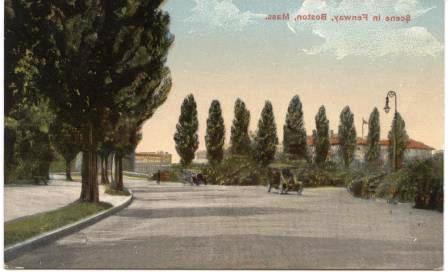
The Back Bay Fens, part of the chain of city green spaces known as the Emerald Necklace, were designed and constructed in the 1890s by the firm of Frederick Law Olmsted. The broad avenues of The Fenway and Park Drive that encircle the gardens, playing fields, and marshlands, were purposefully designed for leisure driving, cycling, and walking.

The two columns at Hemenway St. and Westland Ave. still stand as a gateway to the Fens for pedestrians and drivers alike. If you walk through this intersection today, many of the young trees depicted on this postcard now tower above the street, providing shade to pedestrians and cyclists as they pause for a break in automobile traffic.
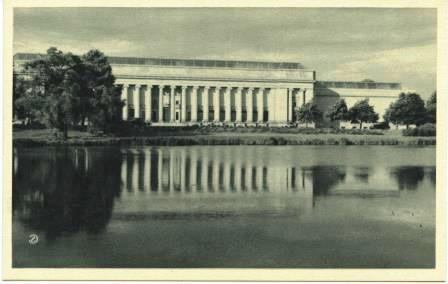
Open to the public in June 1876 on Copley Square, the Museum of Fine Arts, Boston relocated to the Fenway in 1909. The Evans Wing for Paintings, depicted here in a fine black and white print, opened to the public in 1915. Today, one of three entrances to the museum opens out onto the Fenway, memorably flanked by the bronze sculptures Night and Day by Spanish artist Antonio Lopez Garcia.
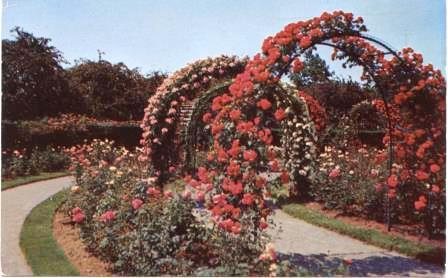
Across the waters of the Fens from the MFA stands the Kelleher Rose Garden, opened in 1931 and designed by landscape architect Arthur Shurcliff, whose papers are held in the MHS collections.
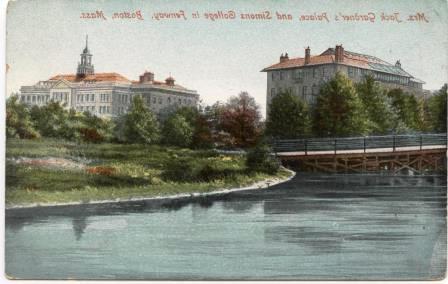
Beyond the Museum of Fine Arts, along The Fenway, stand “Mrs. Jack Gardner’s Palace” — the Isabella Stewart Gardner Museum — and Simmons College, founded in 1899 and opened to its first class of 142 students in the fall of 1902. They offered young women degrees in Home Economics, Library Studies, Secretarial Studies, Nursing, Teaching, and General Science.
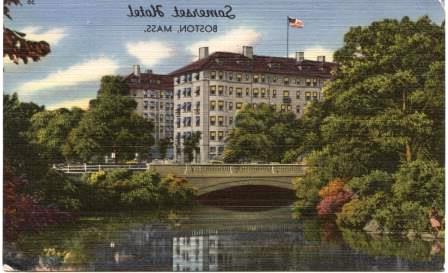
At the opposite end of the Back Bay Fens from Simmons College stands the Somerset Hotel. Designed by Arthur Bowditch in the 1890s — the same period during which the Massachusetts Historical Society’s 1154 Boylston St. building was under construction — Somerset Hotel still stands today along what remains of Charlesgate Park, the link between the Back Bay Fens and the Charles River Esplanade.
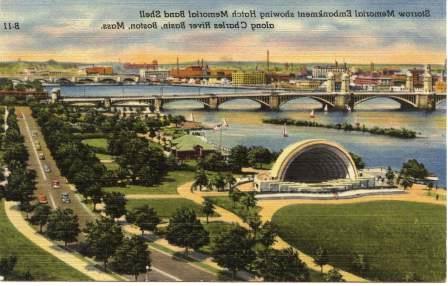
The Esplanade parkland was severed from the Emerald Necklace in the 1950s when Storrow Drive was constructed to ease the traffic congestion to and from downtown Boston. Our final postcard today shows the newly-minted roadway as it snakes passed the now-iconic Hatch Memorial Band Shell, from which the Boston Symphony Orchestra broadcasts its Boston Pops concert every 4th of July.
While the postcard collection at the Massachusetts Historical Society is uncataloged, it is available for research use in the Society’s reading room. The postcards are arranged by geographic location and subject matter, covering Massachusetts, national, and foreign scenes. If you would be interested in accessing this collection please contact the library to arrange a visit.

